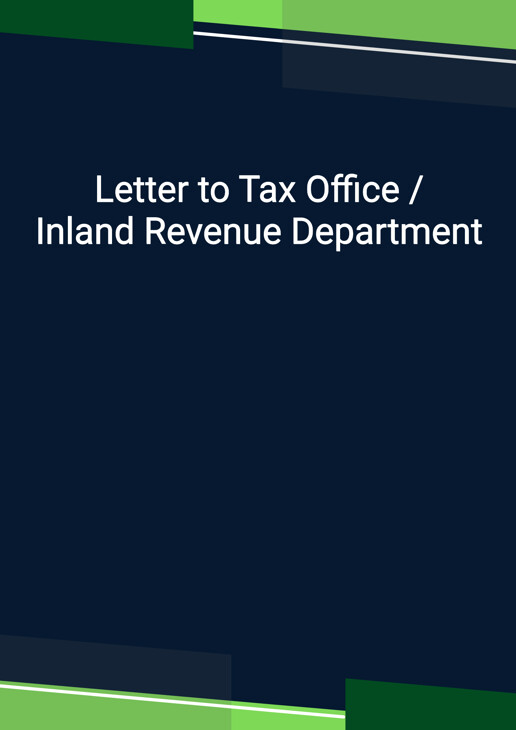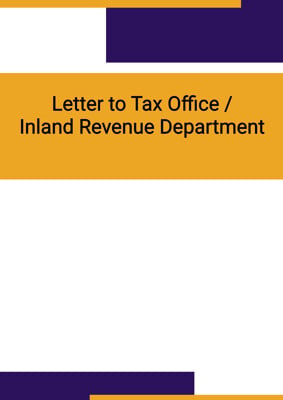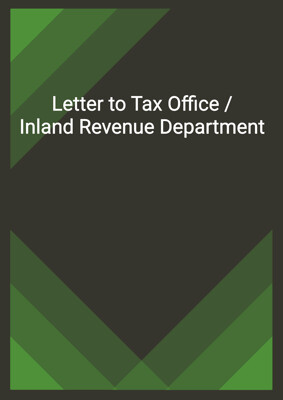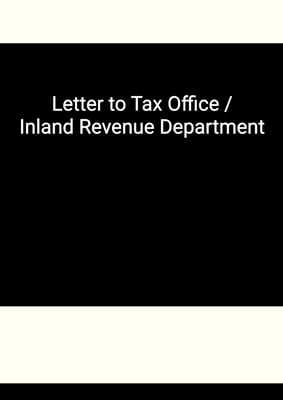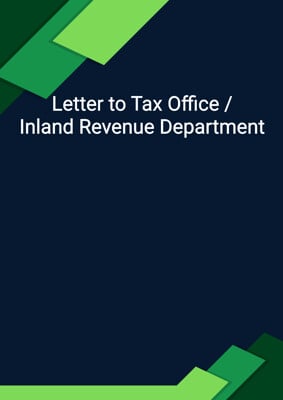How to Tailor the Document for Your Need?
01
Create Document
Click "Create Document" button and the document will be prepared with your account details automatically filled in.
02
Fill Information
Please fill in any additional information by following the step-by-step guide on the left hand side of the preview document and click the "Next" button.
03
Get Document
When you are done, click the "Get Document" button and you can download the document in Word or PDF format.
04
Review Document
Please review the document carefully and make any final modifications to ensure that the details are correct before sending to the addressee.
Document Preview
Document Description
The document titled 'Letter to Tax Office / Inland Revenue Department' is a formal letter that is used to report tax evasion by an individual or a business. The letter is addressed to the Commissioner of Taxation, Tax Office, Tax Bureau, Inland Revenue Department, or HM Revenue & Customs, depending on the jurisdiction. The purpose of this document is to provide detailed information about the tax evasion activities of the reported party.
The letter starts with the account holder's first name, last name, address, and email. It is important to provide accurate contact information to establish the credibility of the report. The current date is also mentioned to indicate the timeliness of the report.
The main body of the letter is addressed to the recipient, whether it is the Commissioner of Taxation or any other relevant authority. The letter begins with a salutation, such as 'Dear Sir/Madam,' followed by a concise introduction stating the purpose of the letter. In this case, it is to report tax evasion by a specific individual or business.
The letter then requests the recipient to provide specific details about the person or business being reported. This includes their tax number, a brief description of the person/business, the type of business they are involved in, the duration of their trading activities, and the connection of the reporting party to the business. These details help the tax authorities to identify and investigate the reported party accurately.
Furthermore, the letter emphasizes the importance of providing comprehensive information about the tax evasion activities. The reporting party is encouraged to include as much information as possible, such as the duration of the tax evasion, the methods used to evade taxes, the expenditure of the evaded money, whether the money is sent overseas, bank account details, and any supporting evidence. Additionally, any other relevant information that might assist in the investigation should be included.
The letter concludes with a closing remark, such as 'Yours sincerely,' followed by the account holder's signature block. It is essential to sign the letter to authenticate the report and establish the accountability of the reporting party.
In summary, the 'Letter to Tax Office / Inland Revenue Department' is a formal document used to report tax evasion. It provides detailed information about the reported party and their tax evasion activities. The letter requests specific details from the tax authorities and encourages the reporting party to provide comprehensive information to aid in the investigation.
How to use this document?
1. Enter Account Information: Fill in the account holder's first name, last name, address, and email in the designated fields.
2. Address the Recipient: Specify the correct recipient, such as the Commissioner of Taxation, Tax Office, Tax Bureau, Inland Revenue Department, or HM Revenue & Customs, depending on the jurisdiction.
3. Introduce the Purpose: Begin the letter with a concise introduction stating the purpose of the letter, which is to report tax evasion by a specific individual or business.
4. Provide Details of Reported Party: Request the tax authorities to provide specific details about the person or business being reported. This includes their tax number, a brief description of the person/business, the type of business they are involved in, the duration of their trading activities, and the connection of the reporting party to the business.
5. Include Comprehensive Information: Encourage the reporting party to provide as much information as possible about the tax evasion activities. This includes the duration of the tax evasion, the methods used to evade taxes, the expenditure of the evaded money, whether the money is sent overseas, bank account details, any supporting evidence, and any other relevant information.
6. Conclude the Letter: End the letter with a closing remark, such as 'Yours sincerely,' followed by the account holder's signature block. Make sure to sign the letter to authenticate the report and establish the accountability of the reporting party.
Not the right document?
Don’t worry, we have thousands of documents for you to choose from:
